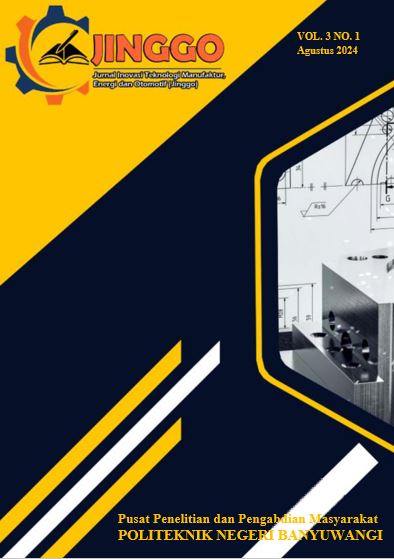PERENCANAAN MODEL BISNIS PADA UPAYA KONVERSI BUS LISTRIK TRANS JOGJA
DOI:
https://doi.org/10.57203/jinggo.v3i1.2024.34-50Keywords:
electric bus, energy conversion, business modelAbstract
Indonesia currently has an oversupply of electricity. Until 2023 PLN has a remaining oversupply of around 6.1 thousand GWh. The cause is the 35-gigawatt coal-fired power plant megaproject. Economic growth has never reached 7%, but an average of 5%. While electricity growth, which was originally planned to reach 8%, the realization could not reach 5%. As a result, there was an oversupply of up to 1gigawatt, and PLN lost 3 trillion. Efforts are needed to increase electrification to reduce losses from oversupply. This is in accordance with the Yogyakarta Special Region Government's plan to convert Trans Jogja Buses into electric buses. This study aims to plan a business model for the conversion of Trans Jogja Buses to Electric Buses, and analyze the feasibility of its investment. From the four business models given, business model 2 was obtained as the best scenario. In this model, Dinas Perhubungan Yogyakarta as the owner of the electric bus fleet and charging station, then contracts the operator PT Anindya Mitra Internasional to be responsible for the operation, while the maintenance of the fleet is carried out by the Original Equipment Manufacturer (OEM). Business model 2 has the highest NPV, which is Rp212,801,776,072 indicating that this project generates greater value compared to the other business models. Other that, business model 2 has an Internal Rate of Return (IRR) of 17%, which is higher than business model 1 and business model 3, indicating a higher potential return on investment. The Payback Period (PBP) is similar to business model 1, which is 4 years and 2 months, but overall the business model 2 project is more profitable. So business model 2 is the best option to implement.
References
[1] PT PLN Persero, “Sistem Kelistrikan Indonesia Semakin Handal dan Ekonomis.”
[2] A. Ahdiat, “Listrik PLN Masih Oversupply Sampai 2023,” Katadata Media Network, 2024. [Online]. Available: https://databoks.katadata.co.id/datapublish/2024/05/31/listrik-pln-masih-oversupply-sampai-2023
[3] Institute for Essential Services Reform, “Tantangan Ketenagalistrikan Indonesia, Bagaimana Menanggulangi Kelebihan Pasokan.” [Online]. Available: https://iesr.or.id/tantangan-ketenagalistrikan-indonesia-bagaimana-menanggulangi-kelebihan-pasokan-listrik
[4] F. Tumiwa, “Megaproyek 35GW Dinilai Jadi Penyebab PLN Kelebihan Pasokan Listrik,” Institute for Essential Services Reform (IESR), 2022. [Online]. Available: https://money.kompas.com/read/2022/09/23/203000226/megaproyek-35-gw-dinilai-jadi-penyebab-pln-kelebihan-pasokan-listrik
[5] N. N. Hudzaifi, “Membeah Skenario Praktik Monopoli Kendaraan Listrik di RI,” CNBC Indonesia, 2023. [Online]. Available: https://www.cnbcindonesia.com/opini/20230329173428-14-425586/membedah-skenario-praktik-monopoli-kendaraan-listrik-di-ri
[6] V. N. Setiawan, “Bukti Nyata Over Supply Listrik PLN,” CBNC Indonesia, 2022. [Online]. Available: https://www.cnbcindonesia.com/news/20220930174544-4-376381/bukan-mengada-ada-ini-bukti-nyata-over-supply-listrik-pln
[7] A. Talattov, “Bahaya Oversupply Listrik Bagi Keuangan Negara,” Institute for Development of Economics and Finance (INDEF), 2022. [Online]. Available: https://www.cnbcindonesia.com/news/20220930124919-4-376261/gawat-ini-bahayanya-over-supply-listrik-bagi-keuangan-pln
[8] A. Bagaskara, “Menilik Upaya Peningkatan Konsumsi Listrik di Indonesia,” Institute for Essential Services Reform (IESR), 2022. [Online]. Available: https://iesr.or.id/menilik-upaya-peningkatan-konsumsi-listrik-di-indonesia
[9] Kementerian Energi dan Sumber Daya Mineral, “Menilik Upaya Peningkatan Konsumsi Listrik di Indonesia,” Essential Services Reform (IESR), 2022.
[10] Kementerian Perhubungan Republik Indonesia, “Pemerintah Terus Dorong Penggunaan Mobil Listrik,” 2022. [Online]. Available: https://dephub.go.id/post/read/pemerintah-terus-dorong-penggunaan-mobil-listrik
[11] Dinas Perhubungan DIY, “Dishub DIY: Mulai 2025, Cuma Kendaraan Listrik yang Boleh Lewat Malioboro,” Pandangan Jogja, 2023. [Online]. Available: https://kumparan.com/pandangan-jogja/dishub-diy-mulai-2025-cuma-kendaraan-listrik-yang-boleh-lewat-malioboro-20tqKbEUeoY/full
[12] A. Osterwalder and Y. Pigneur, Business Model Generation: A Handbook for Visionaries, Game Changers, and Challengers. Wiley, New Jersey, 2010.
[13] Kementerian Perindustrian RI, “Langkah Pemerintah Menyambut Industri Kendaraan Listrik,” 2023.
[14] BPK RI, LHP Kinerja atas Pembangunan dan Pengelolaan Jalan Tol Lingkar Luar dan Penyediaan Infrastruktur Kendaraan Bermotor Listrik Berbasis Baterai untuk Mendukung Transportasi Perkotaan BerkelanjutanTahun 2019 s.d. Semester I Tahun 2021 pada Kementerian PUPR, K. Jakarta: BPK RI, 2022.
[15] M. I. Asaad, “Road Map Pengembangan Infrastruktur Kendaraan Listrik 2020 -2024,” 2020. [Online]. Available: shorturl.at/jxHLM
[16] R. K. Anam, “Business Case of Transjakarta’s First Phase E-Bus Deployment: An Executive Summary,” Institute for Transportation and Development Policy (ITDP), 2023.
[17] F. S. Kamajaya and M. muzmi Ulya, “Analisis Teknologi Charger Untuk Kendaraan Listrik - Review,” J. Rekayasa Mesin, vol. 6, pp. 163–166, 2015, doi: 10.21776/ub.jrm.2015.006.03.4.
[18] J. Carman, A. Harris, G. Chapman, K. Radecsky, and J. Zoellick, “Electric Vehicle Charger Selection Guide,” Calif. Energy Comm., 2018.
[19] A. Osterwalder and Y. Pigneur, Business Model Generation. Amsterdam, 2009.
[20] P. D. Weill and M. Vitale, Place to Space: Migrating to eBusiness Models. Massachusetts Institute of Technology, 2001.
[21] M. Fetoui, A. Frija, B. Dhehibi, M. Sghaier, and M. Sghaier, “Prospects for stakeholder cooperation in effective implementation of enhanced rangeland restoration techniques in southern Tunisia,” Rangel. Ecol. Manag., vol. 74, pp. 9–20, 2021, doi: 10.1016/j.rama.2020.10.006.
[22] A. . Mendelow, “Environmental Scanning--The Impact of theStakeholder Concept,” Int. Conf. Inf. Syst., 1981.
[23] D. Herlianto and T. Pujiastuti, Studi Kelayakan Bisnis. Yogyakarta:Graha Ilmu, 2009.
Downloads
Published
Issue
Section
License
Authors who publish with this journal agree to the following terms:
- Authors retain copyright and grant the journal right of first publication with the work simultaneously licensed under a Creative Commons Attribution License that allows others to share the work with an acknowledgement of the work's authorship and initial publication in this journal.
- Authors are able to enter into separate, additional contractual arrangements for the non-exclusive distribution of the journal's published version of the work (e.g., post it to an institutional repository or publish it in a book), with an acknowledgement of its initial publication in this journal.
- Authors are permitted and encouraged to post their work online (e.g., in institutional repositories or on their website) prior to and during the submission process, as it can lead to productive exchanges, as well as earlier and greater citation of published work (See The Effect of Open Access).







